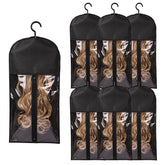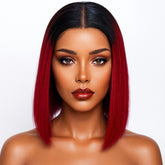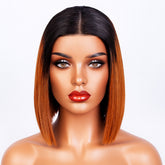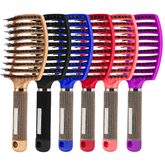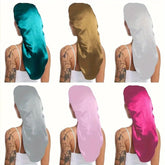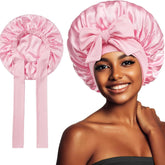Silicone-Free Shampoo: Benefits for Textured and Styled Hair

If you’ve ever wondered why your hair feels heavy, flat or dry despite regular conditioning, the shampoo you use could be part of the problem. Silicone-free shampoos have moved from niche to mainstream as more people with textured or frequently styled hair discover how avoiding silicones can change texture, volume and manageability. This guide explains what silicones do, why they can cause issues for some hair types and practical steps to decide whether a silicone-free switch will benefit your routine.
What silicones do — and why they can feel helpful
Silicones are synthetic ingredients commonly added to shampoos, conditioners and styling products. They form a smooth, protective film on the hair shaft which can:
- Reduce friction and improve detangling;
- Smooth the cuticle for increased shine and reduced frizz;
- Provide temporary protection during heat styling and give the impression of healthier hair.
Those effects make silicones attractive when you want immediate slip and glossy results. However, that same coating can be a drawback for certain hair types and styling goals.
Why textured and styled hair may benefit from silicone-free shampoos
Textured hair — including wavy, curly and coily textures — relies on moisture getting into the hair shaft to maintain elasticity and definition. When hair is coated with silicone, water and conditioning ingredients can struggle to penetrate. Over time this can leave curls feeling dry, less defined and heavier rather than springy.
For those who frequently style hair (heat or chemical treatments), silicones can temporarily mask damage but also trap residue. Common outcomes reported by many textured-hair communities and stylists include:
- Build-up that weighs curls down and flattens volume;
- Dullness when the silicone layer traps dirt and styling residues;
- Difficulty achieving long-term moisture balance because nourishing ingredients have trouble reaching the cortex.
Switching to a silicone-free shampoo can help restore natural texture, improve curl bounce and reduce the need for clarifying washes.
How to switch to silicone-free without stressing your hair
A sudden change can reveal build-up left by previous products. Follow these steps to transition smoothly:
- Clarify first: use a clarifying or chelating shampoo once to remove heavy residue before you start your silicone-free routine.
- Introduce gradually: alternate silicone-free and your usual shampoo over a couple of washes so your hair and scalp adjust.
- Focus on moisture: choose conditioners and leave-in treatments with humectants (glycerin, aloe) and lightweight oils to support textured strands without heavy coating.
- Adjust styling: when you remove silicones, you may need different products or slightly altered techniques to achieve the same frizz control or shine.
For many, results appear within a few washes — hair feels lighter, curls regain definition and volume returns. If your hair has a lot of product residue, it can take a few weeks before you notice the full benefit.
Choosing the right silicone-free shampoo
Not all silicone-free formulas are equal. Consider these points when reading labels and picking a shampoo:
- Look for gentle surfactants that cleanse without stripping; avoid overly harsh sulphates if your hair is dry or chemically treated.
- Seek ingredients that support moisture: humectants, mild proteins and plant oils can help textured hair stay hydrated and resilient.
- Check for clarifying agents if you frequently use heavy oils or styling products — occasional deeper cleans will keep build-up at bay.
- Patch-test styling compatibility: some people find they need a different leave-in or cream to replace the smoothing effect of silicones.
When silicones might still be useful
There are circumstances where a silicone-containing product may be helpful: if you need immediate smoothing before a special event, or when protective coating helps reduce breakage during repeated heat styling. The key is balance — many people choose to use silicone-free shampoos regularly and reserve silicone-based serums or sprays for occasional styling needs.
Takeaway
Silicone-free shampoos can be a game-changer for textured and frequently styled hair. By avoiding synthetic coatings you allow moisture and nourishing ingredients to work more effectively, which often improves curl definition, volume and long-term manageability. Transitioning thoughtfully — with an initial clarifying wash and a focus on moisture-supporting ingredients — will help you see the benefits without unwanted surprises.
Explore More: Discover related reads from Hairporium — News • Guides • DIYs • Expert Articles.
Learn More: Explore detailed haircare routines and styling tips at Hairporium Guides.

